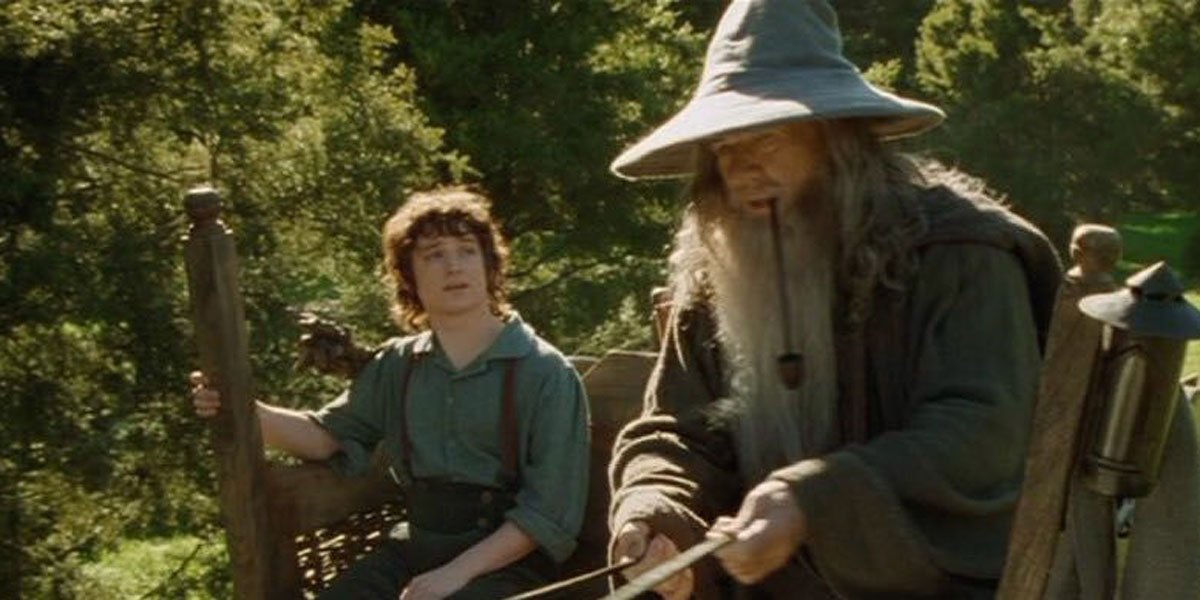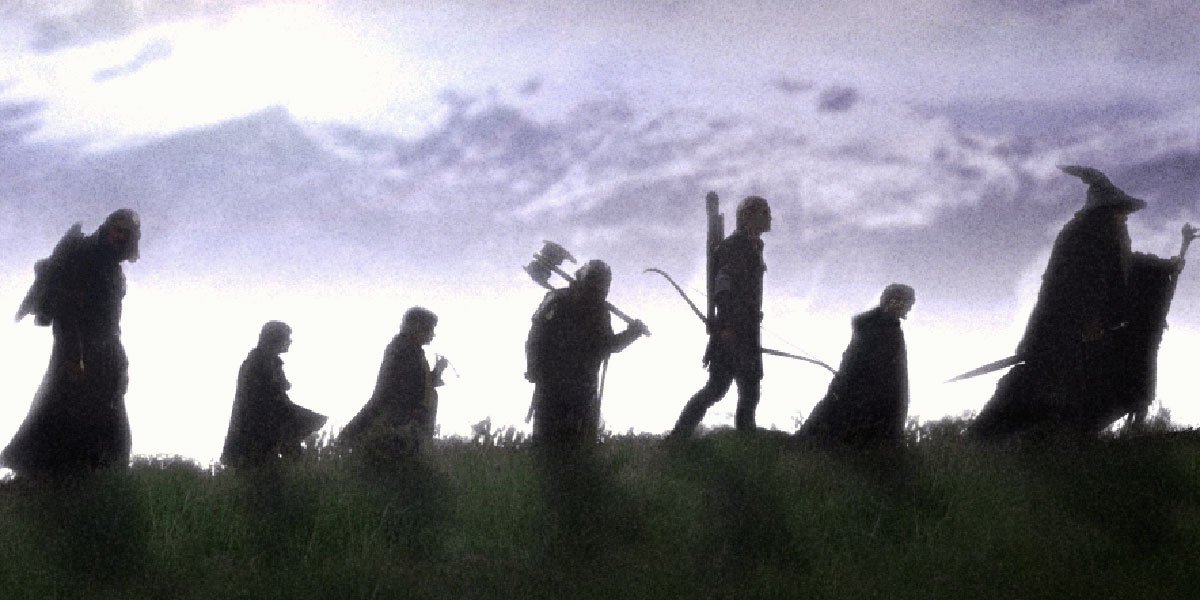Elijah Wood Explains How The Lord Of The Rings Movies Made Him Look' Small' As A Hobbit

Elijah Wood is not a particularly tall guy, but when he recently found out people frequently Google “how they make Elijah Wood small,” the question had less to do with genetics and more with special effects in the Lord Of The Rings movies. Thankfully, instead of being a little weirded out by the question, Wood took it seriously and gave LOTR fans an answer.
So, if you’ve ever wondered how The Fellowship of the Ring, The Two Towers and The Return of the King made Wood’s Frodo and his merry band of hobbit compatriots so small, there were actually three ways and not just one that accomplished the goal.
Blue Screen Definitely Came Into Play
Like a lot of movies these days, green screen – or in this case blue screen – was used to fit the hobbits into scenes in the correct size. Speaking with Wired, Elijah Wood revealed that a lot of scenes would be shot like normal, but just without Elijah Wood or actors like Sean Astin, Billy Boyd and Dominic Monoghan, who played Samwell, Pippin and Merry, respectively.
After the scenes were shot like normal, Wood revealed that is when the blue screen came in, noting:
We would then go into a blue screen unit and sort of fit ourselves into that same shot. We’d be comped in.

Stand-In Actors Wore Masks And Walked Around During Wide Shots
The second way The Lord Of The Rings worked in hobbit-sized individuals was through the use of stand-ins. Elijah Wood says this tactic was used for a lot of wide shots, including I presume a lot of scenes where the cast is trudging around on its epic journey.
According to Wood, the franchise hired people of the right size as the hobbits to play the characters in certain shots. It sounds easy, but it also meant the actors in question had to wear masks to look like Elijah Wood and the rest of the main cast while they were hanging out on set. He called these stand-in’s “scale doubles,” noting,
We also had scale doubles, people who were about the height of hobbits that would wear our outfits and also masks of our face[s], which was pretty disturbing. They were incredible and they did a lot of our work for the wide stuff.
Perspective Was Used To Make Movie Magic
Perspective is a trick a lot of movies use in order to fool the eye into thinking it’s seeing something it is really not. In real life, however, you may have caught perspective being used in places like theme parks. In particular, Disney World and its sister park Disneyland are fond of using perspective to do things like make castles seem larger than they actually are.
Your Daily Blend of Entertainment News
Elijah Wood gave a great example of when this was used in The Lord Of The Rings, bringing in the famous scene with Frodo and Gandalf in the cart in Bag End to really explain to audiences how force perspective works.
A good example of that would be Frodo and Gandalf in the cart at Bag’s End in the first film. Frodo jumps into the cart and they’re sitting side by side. I was actually sitting slightly behind Ian McKellen and Ian McKellen sat slightly ahead of us and the camera was placed in such a way that it looked like we were sitting side by side with him taller than I. You’d look at the monitor and you’d see us sitting next to one another and he was tall and I was small.
Wood went on to mention that it was a “super old-fashioned trick” but one that definitely still worked for the LOTR movies when they were being made.
Elijah Wood also said that at one point, specifically with the Prancing Pony scene, the crew was trying to toy with putting real people on stilts with big costumes in order to make them seem much larger than the hobbits. However, that technology was “impractical” and it was ultimately abandoned.
So to recap, The Lord Of The Rings: The Fellowship Of The Ring and its two sequels used myriad tricks to make the hobbits look small including:
Blue screenSmaller stand-insForced perspectiveAnd at one failed point, stilts
I’m assuming many of these tricks were later used with The Hobbit movies starring Martin Freeman as Bilbo Baggins later on. All of these multiple tricks ultimately worked as the LOTR movies became notable projects in each of the main cast members’ body of works and still hold up and have fanbases worldwide today.
It has, in fact, been a big couple of weeks for The Lord Of The Rings, as Ian McKellen only just released some of his diaries from the production a few weeks ago, even recalling his last day filming The Return Of The King. Next up, we’ll be getting an Amazon TV series with new actors and hopefully a few more tricks under its belt.

Jessica Rawden is Managing Editor at CinemaBlend. She’s been kicking out news stories since 2007 and joined the full-time staff in 2014. She oversees news content, hiring and training for the site, and her areas of expertise include theme parks, rom-coms, Hallmark (particularly Christmas movie season), reality TV, celebrity interviews and primetime. She loves a good animated movie. Jessica has a Masters in Library Science degree from Indiana University, and used to be found behind a reference desk most definitely not shushing people. She now uses those skills in researching and tracking down information in very different ways.
